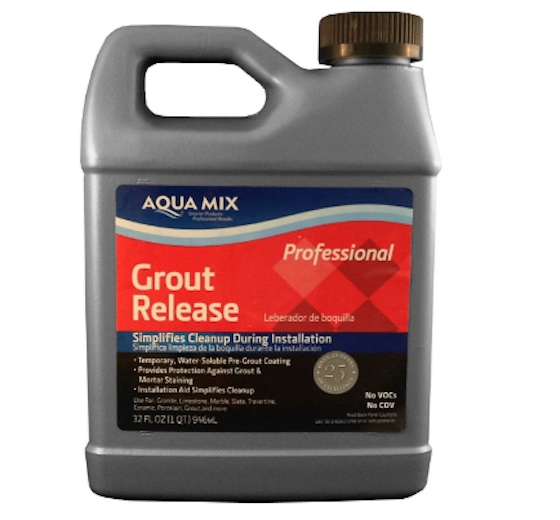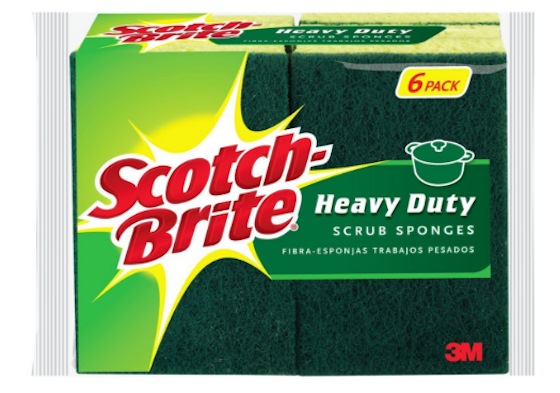Remove Grout from Ceramic Tile
Remove Grout From Ceramic Tile TIPS
- Grout is really concrete - you must get it all off the tile
- Water prevents scratches as you clean off the grout
- Sugar works well - secret tip below
- Use wood sticks and scouring pads
- CLICK HERE to Get Tim's FREE & FUNNY Newsletter!
Not a month goes by that someone doesn't email me and ask how to remove excess grout from a wall or floor tile job. People have sent me photos that make me cringe.
In the photos one can see massive amounts of excess grout and a heavy grout film on the face of the tile. I've seen huge messes!
Grout Is Concrete
I think many people who work with ceramic tile for the first time are not aware of what grout really is. For the most part it's Portland cement.
Wall grout is almost always 100-percent Portland cement powder. Floor grout is a blend of Portland cement and fine grains of pure silica sand.
Silica sand is extremely durable and is very hard. It's an excellent addition to floor grout and it's needed to make the grout strong once a grout line exceeds 1/8-inch in width.
Sanded Grout Video
Watch this video to see what sanded grout looks like when mixed and properly installed.
Concrete Is Hard & Sticky
I can't imagine a person who doesn't respect how hard concrete or cement dries.
What's more, it's sticky. You should see how tenaciously cement sticks to smooth metal shovels and trowels. The microscopic crystals that grow as cement hardens lock onto objects like Velcro®.
Bad Advice
When people contact me about grout removal problems the common denominator is always, "...we were told the grout film would come right off."
Well, a very light haze will come off of glazed tiles with an old bath towel, but heavier deposits can be a nightmare to remove.
The light haze will almost always come off with ease because so much water has been used to strike the grout joints, there's not much Portland cement on the tile once the water evaporates.
Matte-Finish vs Glazed
Not all tile has the same finish. Glazed tile that has a smooth high-gloss surface is indeed the easiest to work with.
But quarry tile and some other tiles have a matte finish that makes them perfect targets for grouting nightmares. The rougher surfaces of these tiles are wonderful places for grout to attach itself.
Slate is no different. The cleft surfaces of natural slate can be a huge challenge when it comes to grouting.
If you look at a piece of slate under a magnifying glass it looks like the valley and ridge province of the Appalachian Mountains.
The grout can get trapped with ease in the tiny valleys and low spots in natural slate.
Secret Sugar Trick
I know this is going to sound crazy, but try it. Take one gallon of warm water and dissolve a cup of sugar into it.
Take this sweet solution and pour it onto excess grout on a floor. If you have wall tile with too much grout, then soak paper towels in the solution and place them on the tile.
Keep the tile wet with the sugar water for at least two hours. After this dwell time is complete, use a new Dobie nylon scrub pad and scrub a small area.
You should see instant results. It may take more than one application of sugar water to completely remove the grout film.
Release Agents
The matte finish tiles, slate, and other delicate ceramic products need to be pre-treated before they are grouted. Years ago different tile manufacturers recommend things like oil soap and other temporary coating products.
But a new industry sprouted as more and more matte finish tiles came to market.
You can buy an assortment of grout release agents. These are very cool liquid products that you wipe or brush onto tile after it has been installed.

Here's a wonderful grout release product that can save your bacon if you're a rookie DIY tile installer. CLICK THE IMAGE NOW TO BUY THIS GREAT PRODUCT.
The coating temporarily seals the porous tile surface. You then grout and as you remove the grout and film, the grout release agent comes off at the same time. They do a superb job of making grouting jobs virtually trouble free.
Be sure to read the label and match the grout release agent to the material you are working with. Certain tiles and stone products require special grout release agents!
Clean Up Tools
To remove a grout haze from tile you need to be careful. You don't want to damage the tile surface.
I've successfully done this using a generous amount of water that acts as a lubricant and synthetic fiber scouring pads.

These are common Scotch-Brite pads. But these happen to be HEAVY DUTY and are the best to use for cleaning up excess grout. CLICK THE IMAGE NOW TO HAVE THEM DELIVERED TO YOUR HOME.
I've had good results from the Scotch Brite pads. These are the deep green pads that are about 1/4 inch thick.
The ceramic tile specialty stores often sell a similar pad called a Doodlebug. These cleaning pads are also superb.
Do A Test
When you start to clean up excess grout, start in an out-of-the-way place and do a small 2-foot by 2-foot test area.
You'll hone your skills here.
Keep in mind that you must stop and check your progress from time to time. Rinse the slop water and use paper towels to dry the tile to see if you're making progress.
No Metal
Don't ever use a metal putty knife, or similar tool, to scrape hard grout deposits. The metal can permanently mar the surface of the tile.
It's much better to use a piece of wood that has a nice square cut on it. A paint stirring stick is not a bad tool to try. If you have access to oak cut a piece to use. Oak is the common wood used to make the slats of a shipping pallet.
Avoid Acid
Think hard before using acid to remove grout mistakes. If you do, always get the tile slightly wet before applying the acid solution. Acid can also affect tile color!
Column B390
18 Responses to Remove Grout from Ceramic Tile